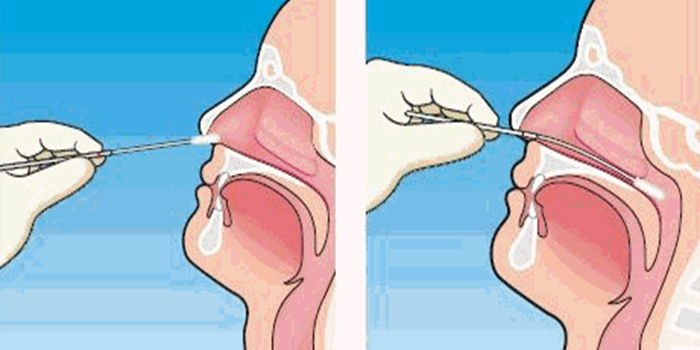How to Collect a Nasopharyngeal Swab
Nasopharyngeal swab specimen are sample of secretions from the uppermost part of the throat, behind the nose, to detect organisms that can cause disease.
CLICK HERE for more resources on Laboratory & Diagnostic Test
Equipments
- penlight
- tongue blade
- sterile swab and transport device
- specimen label
- personal protective equipment
- patient chart
- waste container
Essential Steps
- Inform the patient that he may gag or feel the urge to sneeze during the swabbing but that the procedure takes less than 1 minute. The swabbing will take 10 to 15 seconds maximum, whereas the entire procedure will take approximately 1 minute.
- Have the patient sit erect at the edge of the bed or on a chair, facing you.
- Wash your hands and put on gloves.
- Ask the patient to blow his nose to clear his nasal passages.
- Check his nostrils for patency with a penlight.
- Tell the patient to occlude one nostril and then the other as he exhales. Listen for the more patent nostril.
- Ask the patient to cough to bring organisms to the nasopharynx.
- While it’s still in the package, bend the sterile swab in a curve. Open the package without contaminating the swab.
- Ask the patient to tilt his head back.
- Gently pass the swab into the patent nostril about 3″ to 4″ (8–10 cm) into the nasopharynx. Keep the swab near the septum and floor of the nose. Rotate the swab quickly and remove it.
- If the nostril is narrow, use a nasal speculum for better access. Alternatively, depress the patient’s tongue with a tongue blade, pass the bent swab up behind the uvula, then rotate the swab and withdraw it.
- Remove the cap from the culture tube. Insert the swab, and break off the contaminated end. Then close the tube tightly.
- Remove and discard your gloves, and wash your hands.
- Label the specimen with the patient’s name and room number; the practitioner’ name; and the date, time, and site of collection.
- Complete a laboratory request form.
- Immediately send the specimen to the laboratory.
- If the specimen is obtained to isolate a possible virus, check with the laboratory for the recommended collection technique.
Reference:
Brunner & Suddarth’s (2010). Handbook of laboratory and Diagnostic Test. New York: Lippincott Williams & Wilkins
CLICK HERE for more resources on Medical Surgical Nursing

